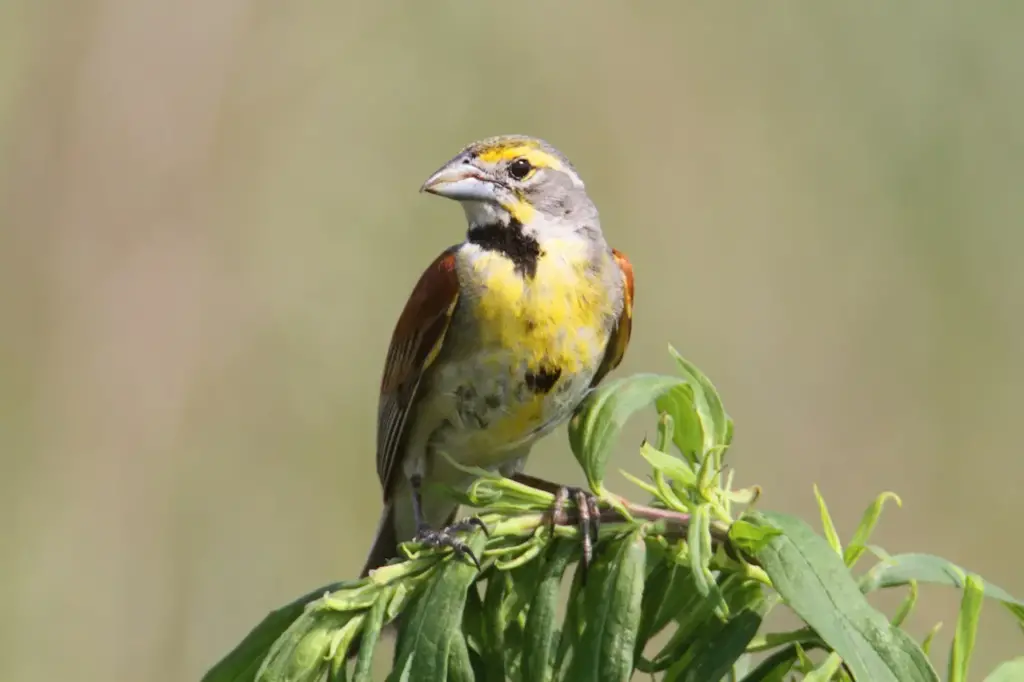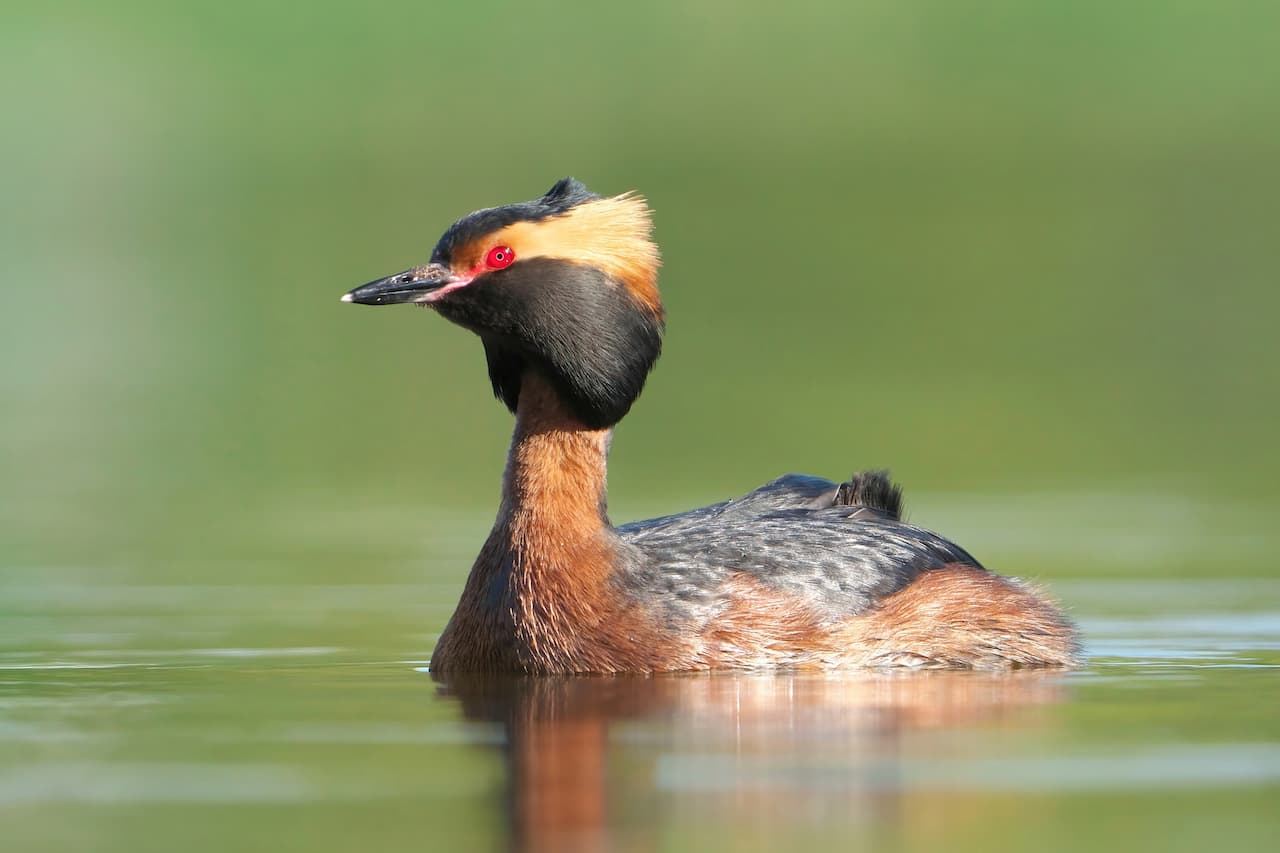The North American Dickcissels are sparrow-like birds that were named for the male’s song, which has been described as a sharp dick dick followed by a buzzed cissel. Their scientific name, Spiza americana, translates to “American finch” (spiza is the Ancient Greek term for finch-like birds). These small songbirds are also known as Black-throated Buntings (Emberiza townsendi) or Townsend’s Dickcissels / Buntings

Alternate (Global) Names:
Chinese: ??? … Czech: Kardinál tmavokrídlý, papežík americký … Danish: Dicksissel … Dutch: Dickcissel … Finnish: Preeriakardinaali … French: Bruant dickcissel, Dickcissel d’Amérique … German: Dickcissel, Dickzisselammer … Icelandic: Skjaldtittlingur … Italian: Dickcissel, Spiza americana … Japanese: munaguronojiko … Lithuanian: Geltonbruv? spiza … Norwegian: Cisselspurv, Sisselspurv … Polish: luszczyk / luszczynek czarnogardly, ?uszczynek czarnogard?y … Portuguese: Papa-capim-americano … Russian: ???????????? ??????? … Slovak: Pápežík ciernohrdlý … Slovenian:Vrab?evec … Spanish: Arrocero, Arrocero Americano, Arrocero Norteño, Dickcissel, Gorrión de Pecho Amarillo, Sabanero Americano, Sabanero Arrocero, Sabanero Común … Swedish: Dickcissel, Dicksissel, Indigosparv … Turkish: Sar?l? çinte
Distribution / Range
Dickcissels occur breed in the pairie grasslands of the mid-western North America and migrate south to winter in the tropical grassland areas of southern Mexico, Central and northern South America.
Prior to the migration, large flocks that may include thousands of them assemble and together make their long journey south to their wintering grounds, where sometimes millions of them can congregate in popular winter roosts. They commonly join in with House Sparrow flocks.
Flocks arrive in their breeding areas in May to June; and travel back south to their wintering range in August or September.
Description:
Dickcissels measure 5.5 – 6.3 inches or 14–16 cm in length (including the tail). Their wingspan is about 9.8 inches or 25 cm. They weigh between 0.8 – 1 oz ( 23–29 g).
The male has a black throat patch, a yellow chest, and a grey crown and grey cheeks. The head and chest are brighter in the breeding male. In non-breeding birds, the black bib is partly concealed. There is a yellow line over the eyes. The plumage above is brownish with black streaks. The wings are dark. There is a rusty patch on the shoulders. The plumage below is pale.
The female and juvenile resemble the American Sparrows. The cheeks and crowns are brownish. The flanks are streaked.
The pale bill is large and pointed.
The “Townsend’s Dickcissel” is a color mutation. The yellow is replaced by white. The brown wings and tails are rufous.
Nesting / Breeding
Dickcissels only remain together for one breeding season, although males may service up to six females. Pairs construct bulky cup nests out of weed and grass stems and line their nests with softer grasses, rootlets and hair. The nests are usually found slightly above ground in dense grasses, small shrubs / bushes, or tree saplings, often situated in alfalfa and clover fields, as well as native meadows and grasslands.
The average clutch consists of 3 – 6 pale-blue, unmarked eggs. The hatchlings are covered with sparse white down.

Diet / Feeding
Their diet consists of insects in the summer and seeds and grains in the winter. They may also visit bird feeders for small seeds and grains.
Songs / Vocalizations
Their calls in flight are described as a low, “electric”, buzzing fpppt. The male’s song is rendered as a sharp dick dick followed by a buzzed cissel.
Species Research by Sibylle Johnson
Please Note: The articles or images on this page are the sole property of the authors or photographers. Please contact them directly with respect to any copyright or licensing questions. Thank you.



